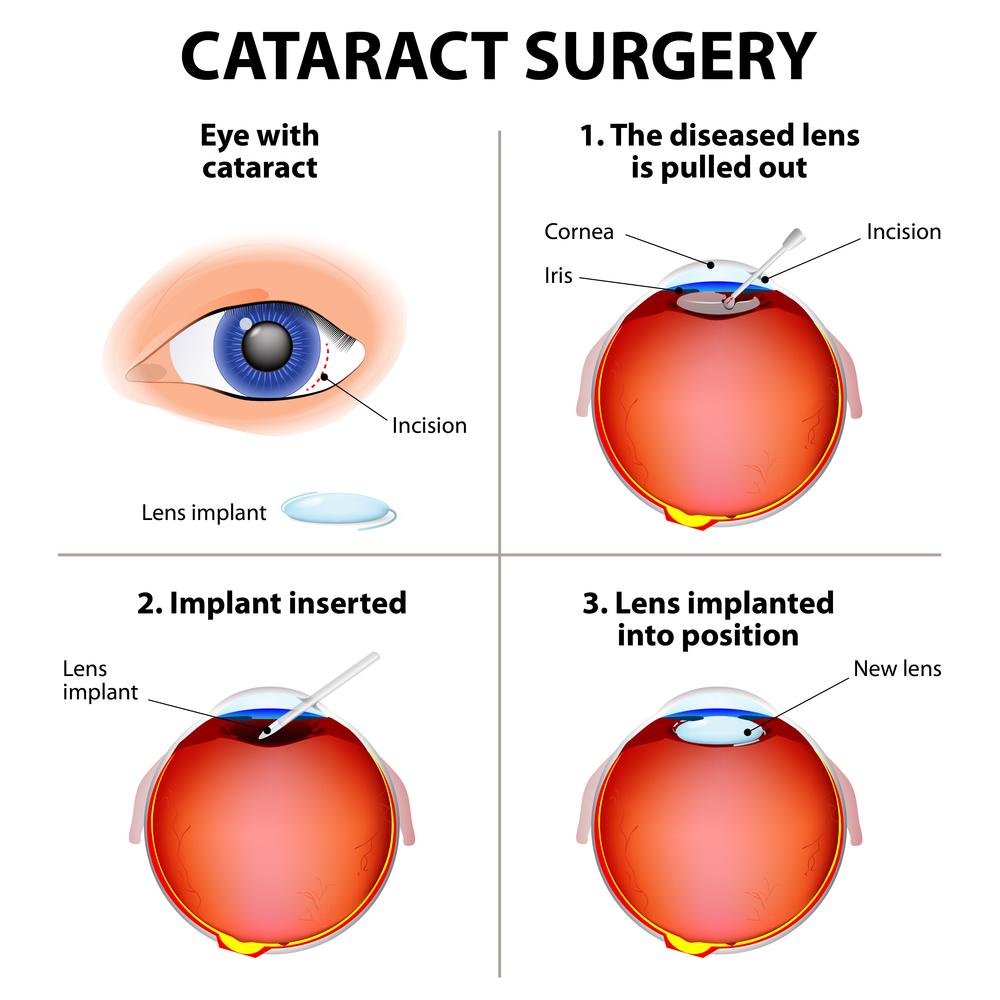The cataract is one of the most important diseases of the vision organs which take place commonly. They bring about fuzzy vision and may instigate cumbersome activities that disrupt each day’s action. Although it is more common in the elderly population, this illness can develop at any age.
The disorder known as cataracts is brought on by the development of opaque layers in the eye’s lens. Otherwise, it prevents light from passing through, which causes vision to become blurry. A majority of the cataracts get worse with time. There are ways to treat them early before they get really bad, but unfortunately, cataracts normally require surgery.
Cataract operation is one of the many eye surgical procedures. It abolishes an obscure lens and uses an artificial lens that is transparent instead. An understanding of cataracts informs one how to deal with this issue and get the necessary attention.
What Are Cataracts?
A cataract is a hazy appearance of the normal lens of the eye. The lens collects light and focuses it on the retina, the part of the eye that creates images. When the lens is opaque then vision becomes obscure. Cataracts can start forming in either of the eyes or even both eyes can be affected. They evolve slowly and can remain undetected initially.
Later on, they may start to impair your driving, reading, or even facial recognition skills. Cataracts are most often caused by aging, although they can also be brought on by trauma, drugs, or illnesses. The earlier symptoms may include simple blurring of vision as a sign of the disease. If they are not treated early they may cause total loss of vision.
Cataracts Symptoms

Cataracts form early and are symptomless, though they do have certain minor, vague symptoms. Many people pay little attention to them until the cataract starts. Common Cataracts symptoms are having a hazy vision. Some colors could fade or look less bold. Lighting is another sign, including glare from lights particularly at night.
Some people at times observe a ring of light around it. The last sign is that a person can have what eye doctors call ‘diplopia’ or see two different images in one eye. Their vision will gradually deteriorate as the cataract progresses even further hence the need for cataract surgery.
If this occurs, a person may lose the ability to drive, read, or engage in any other normal daily activities. One should go see an optometrist for a thorough eye examination if they are exhibiting any of these symptoms. This means early diagnosis for complications to be averted.
What Causes Cataracts?
The leading cause of cataracts is aging. However, as people age, the buildup of proteins in the lens, which forms a cluster, creates a concern. It is a naturally normal process that begins to manifest in most people as they grow older. Other causes exist. Among the potential risk factors, there has been highlighted diabetes.
People being inflicted with diabetes are bound to off develop cataracts at an early stage in their lifetime. It causes cataracts because eyes are exposed to Ultraviolet light. Alcohol and smoking are also known to increase the risk of developing the aforementioned ailment. Corticosteroids and other medications are also implicated.
Other risk factors include eye injury, infection and inflammation of the eye and lens. Genetics may also play a role. There are some conditions that one is likely to get cataracts due to family genes related to eye problems.
What Are The 3 Types Of Cataract Surgery?

Cataract surgery is the most common type of cataract disease, albeit there are three subtypes.
- Phacoemulsification (Phaco) is the most common type. Through a tiny incision, ultrasonic pulses break up the cloudy lens into smaller bits, allowing for lens removal and replacement.
- Extracapsular Cataract Extraction (ECCE): Although here the cataract is removed in one piece, this process involves making a bigger incision. Prophylactic shattering of the cataract is often used when the cataract has become too large for this procedure. The cataract is first to be taken out, and then the lens is implanted.
- Intracapsular Cataract Extraction (ICCE): It is the rarest technique. In ICCE, only the cataract and the capsule of the lens are taken out. This means that the operation involves a large cut and is done occasionally when the cataracts are severe.
Every one of the surgeries mentioned a moment ago has its advantages and disadvantages. The type of surgery performed will thus be determined by the patient’s condition and what the physician deems appropriate. In the majority of situations, patients’ vision improves after cataract procedures.
Cataract Surgery Cost
The cataract surgery cost depends on some factors and it is therefore a variable cost. This is done based on the type of surgery, location of surgery, and the available technology. This price ranges from $3,000 to USD 5,000 per eye and may also include procedures, anaesthesia, and postoperative evaluations.
Some of the most advanced features are optional and can be purchased for a cost. These include laser cataract surgery and ultra-high-quality lenses. While some charges, such as those for speciality glasses or high-end surgical equipment, are not covered, most fundamental operations are.
Medicare and other insurance programs often fund cataract surgery. Find out what your insurance company will allow. However, there are other cataract treatments to address the issue, such as funding choices for the patient.
Food Not To Eat After Cataract Surgery
It is very important to avoid injury and strain to the operated eye after cataract surgery. A lot of this has to do with their diet. The patient must avoid certain meals to speed up the healing process and reduce the chance of problems. Such foods have to be high in sodium which must be restricted.
Excess fluid retention and elevated ocular pressure might result from consuming too much salt. Other foods may be overly hot or acidic, which can be unpleasant, especially when combined with certain medications after surgery. Pro-inflammatory foods such as fried and processed foods should be avoided as well. Alcohol and caffeine consumption are to be avoided because excessive dehydration will retard recovery.
Cataract Surgery Aftercare
Post-cataract surgery care involves various very important things in the course of recovery. The first days are a critical period. The patients are often recommended to rest and not exert too much. An eye shield or glasses should be worn to avoid rubbing, which might lead to injuries. Doctors may prescribe eye drops to patients to prevent inflammation and infection.
Take careful showering and cleaning of the face to prevent water from entering the eyes in the early days. You should not swim or take hot tubs till the eye is fully recovered. Some follow-up consultations might be arranged to find out about healing and possible complications. Most of the patients can get back to their routine in a few days to a week. Most patients require from four to six weeks to fully recover. Your eyesight may even improve over time.
Conclusion
Cataracts are one of the most prevalent eye disorders, affecting millions of people worldwide. They cause decreased vision that is typically fuzzy or cloudy. Surgery is the most effective way to treat cataracts, which come in three different varieties. There are no serious problems with cataract surgery. It is one of the most effective surgeries performed worldwide. Another element that insurance can frequently address is cost. After surgery, a good diet and eye care will help you recover smoothly. You can make informed decisions improving your vision with knowledge about cataracts and treatment options.



